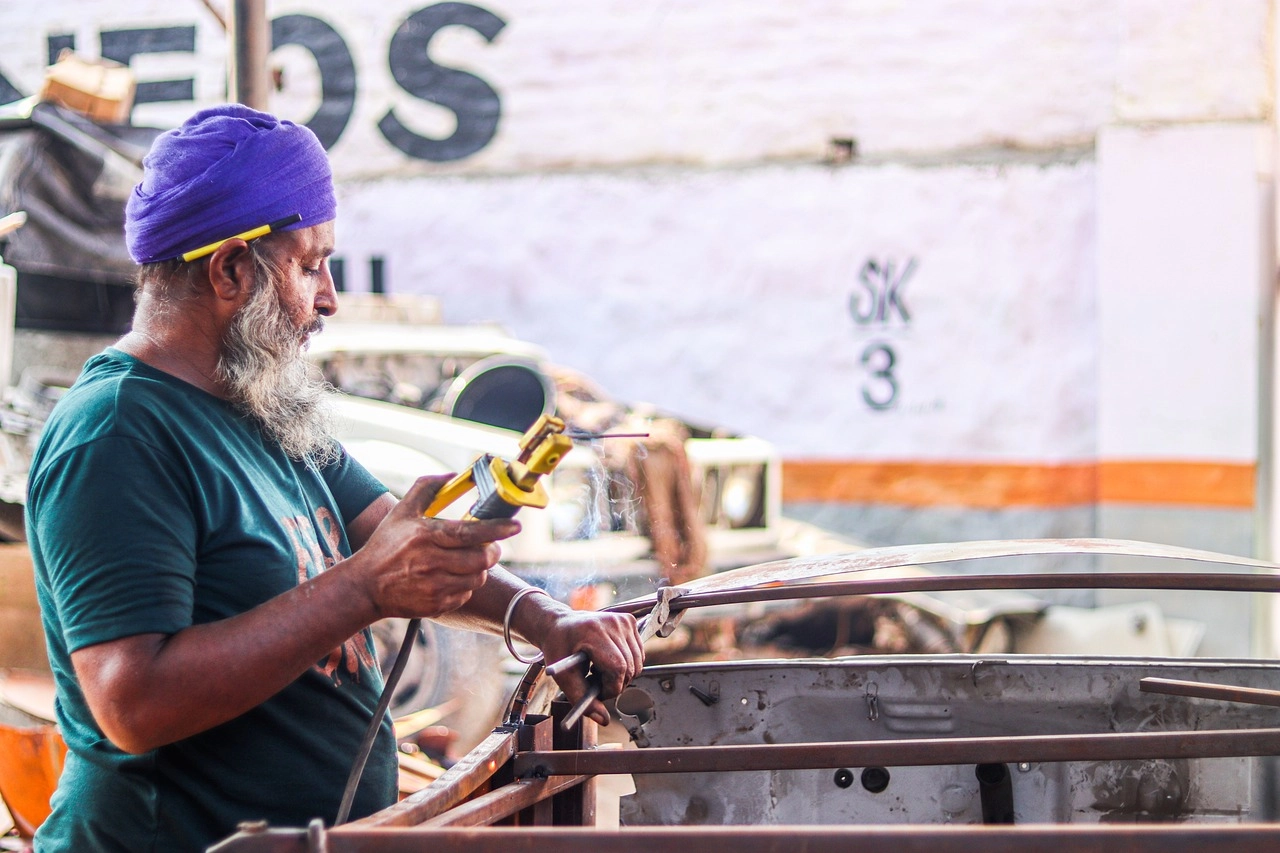Can India become the world's factory instead of China?
 Table of contents
Table of contents
Last week, Apple announced plans to manufacture the latest iPhone 14 in India, marking a major milestone in the company's strategy to diversify production outside of China. 5% of iPhone 14 production is expected to move to India this year. And this is happening much sooner than analysts expected.

More companies are moving production out of China to minimize supply chain risks. In the article — about India's chances of becoming the world's next factory.
According to analysts at investment bank JP Morgan, by 2025, a quarter of all iPhones produced by the company may be manufactured in India.
Apple has been manufacturing the iPhone in Tamil Nadu in southern India since 2017. But the decision to produce the flagship model in India — a move that deserves attention as trade tensions between Beijing and Washington show no signs of easing.
This step also takes on meaning in the context of "risk mitigation"; in the global supply chain due to China's "zero tolerance for coronavirus" policy.
"China Plus One"
Beijing's tough approach to fighting the pandemic has caused production shutdowns and large-scale disruptions in supply chains
As a result, global companies are increasingly using the plus one strategy, investing beyond China to refocus supply chains.
“Companies are no longer willing to sit back and wait for policy changes in China, or put their eggs in one basket to meet supply needs. They want to make sure they have two or three alternatives, — commented Oscar De Bock, CEO of DHL Supply Chain.
In his opinion, this trend has had a positive effect on the business of suppliers from India, Vietnam and Mexico.
While in India's financial capital, Mumbai, De Bock announced that DHL would invest €500 million in the country to double its warehouse capacity and headcount in the next five years.
He said the commitment was driven in part by rising foreign investment in sectors such as manufacturing and electronics, where Prime Minister Narendra Modi's government is offering financial incentives to companies seeking to make India their manufacturing hub.
As part of the scheme, mining conglomerate Vedanta Resources also committed an investment of around $20 billion to set up a semiconductor plant in India in partnership with Taiwanese electronics giant Foxconn.
Anil Agarwal, Chairman of Vedanta Resources, said last month that the world is committed to adopting the China Plus One strategy. and "India is clearly in a favorable position."
Indian Advantage
India, Asia's third largest economy, is working hard to position itself as an attractive manufacturing and export hub for multinational corporations.
- The country has a large domestic market and many inexpensive specialists.
- With GDP growth in the 6-7% range and lower inflation than many other parts of the world, India has been one of the most successful major economies this year.
- Its merchandise exports topped the $400 billion mark after nearly a decade of stagnation at $300 billion.
In addition to tax incentives, the Modi administration is also actively promoting bilateral trade agreements to integrate India deeper into global supply chains and change its image as a slow-talking partner.
Businesses welcomed these initiatives.
However, experts say India's approach to trade liberalization could be one step forward and three steps back.
Hurrying to sign free trade agreements to improve market access and lower tariffs, the authorities called for self-sufficiency and raised tariffs on at least 3,000 goods, many of which are critical to manufacturing processes.
Privately, many foreign companies also complain about the uneven playing field and rising protectionism.
Small and medium-sized companies, which form the backbone of India's economy, continue to find it difficult to navigate the country's bureaucratic system. Truly drastic land acquisition reforms and faster licensing have proved elusive. Unreliable infrastructure remains the main stumbling block.
Mihir Sharma, director of the Observer Research Foundation (ORF), notes that although Apple's projects are certainly successful, turning India into a manufacturing hub will require not only large investments, but also the creation of a favorable ecosystem for SMEs.
“It is too early to tell whether all these investments will be made on a large scale and will be sustainable over time,” — he adds.
Sharma notes that SMEs, which employ the bulk of India's workforce, are largely excluded from the fiscal stimulus program.
According to ORF, the scheme covers mainly textiles and apparel, leaving out other labour-intensive manufacturing industries that could enable India to leverage a plus one growth strategy. and create jobs for the 12 million Indians who join the labor force each year.
The expert believes that in order to compete with the Asian economies, India will need to improve the skills of the workforce and create a "more favorable business climate."
Thailand, Vietnam and South Korea are well ahead of India in the World Bank's ranking of ease of doing business. Vietnam has also developed a 2030 plan to build the integrated infrastructure needed for mass production.
Tipping point
But despite these temporary difficulties, India is in a better position than ever before to seize this "historic opportunity," says Alex Capri, a research fellow at the Hinrich Foundation.
He says that some of the "key nodes" in India — southern states such as Tamil Nadu, Telangana and the National Capital Region in the north — quite poised to create a critical mass in manufacturing as the US and its allies distance themselves from China.
India could also benefit from Taiwanese tech companies moving manufacturing facilities into the country under "friendly support" agreements, attracted by the benefits of easy access to affordable and skilled labor.
So this is a tipping point?
"One of my Indian friends told me that India never misses an opportunity... miss an opportunity. But I think it's different this time, — says Capri.



 Other topics:
Other topics:
 REAB Services
REAB Services

 News
News
 Useful tip
Useful tip

